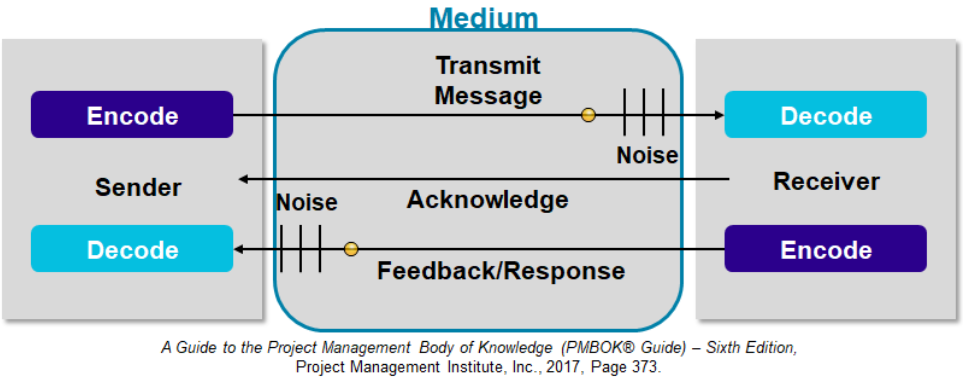Manage communications
Enablers
- Analyze communication needs of all stakeholders. (ECO 2.2.1)
- Plan communication methods, channels, frequency, and level of detail. (ECO 2.2.2)
- Communicate project information and updates effectively. (ECO 2.2.3)
- Confirm communication is understood and feedback is received. (ECO 2.2.4)
Deliverables, and Tools

Project Communications
- Internal or external stakeholders
- Formal or informal - message content and format
- Hierarchical focus - senior management or peers
- Official or unofficial - annual reports or reports to other governing bodies compared to project team communication
- Written or oral – tone, inflection, and nonverbal gestures are influential
Communications Management Plan

Components of the Communications Management Plan
- Stakeholder communications requirements.
- Information to be communicated, including language to be used.
- Reason for the distribution of the information.
- Time frame and frequency of information distribution.
- Person responsible for the communication.
- Person responsible for the release of confidential information.
- People who will receive the information.
- Methods or technologies that will be used to convey the information.
- Time and budget allocated for communication.
- Escalation process for issues that need visibility.
- Method for updating the communications management plan.
- Glossary of common terminology.
- Flowcharts of information flow.
- Any communication constraints due to regulation or policies.
Communication Requirements Analysis
Communication requirements analysis * is an analytical technique to determine the information needs of the project stakeholders through interviews, workshops, study of lessons learned from previous projects, etc.
- Investigation that leads to a clear articulation of the stakeholders’ communication needs
- Helps the project manager make effective choices regarding the technologies to be recommended
- Takes the form of a grid, questionnaire, or survey that documents the communications and technology requirements for each stakeholder
- A project manager conducting communication requirements analysis may survey stakeholders regarding their communication needs by asking some basic questions such as:
- How often will you like to receive status reports?
- How will you prefer to receive information—by phone, by email, or in face-to-face meetings?
- What level of detail are you expecting?
Communication Types
- Face-to-face meetings
- Video and voice conferencing (virtual meetings)
- Fax
- IM—Instant Messaging
- Text messaging
- Printed media and documents
- Social media
- Company website
Communication Models
Communication models * are a description, analogy, or schematic used to represent how the communication process will be performed for the project.
There are five steps to a standard communication model:
- Encode
- Transmit message
- Decode
- Acknowledge
- Feedback/response

Communication Methods
Communication methods * are a systematic procedure, technique, or process used to transfer information among project stakeholders.
Communication methods can be broadly classified into three types:
- Interactive communication – meetings, phone calls, IM, social media, videoconferencing.
- Push communication – letters, memos, reports, emails, faxes, voice mails, blogs.
- Pull communication - web portals, intranet sites, e-learning, lessons learned databases, or knowledge repositories.
Feedback
- Communication is a two-way street.
- Feedback can be verbal, non-verbal (body language and facial gestures), or written.
- Feedback can be positive, if the message was received and understood as intended by the sender.
- Feedback can be negative if the receiver does not understand what the sender intended.
- No feedback provides an implicit acceptance of the message by the recipient.
- Effective feedback should be clear, specific, and offered in a timely manner.
Guidelines to Effectively Manage Communication throughout the Project
- Gather and distribute contact information for all involved parties.
- Determine the communication needs of project stakeholders.
- As a rule of thumb, project team members require more detail on a more frequent basis. Senior management typically requires summary information on a less frequent basis.
- Analyze the value to the project of providing the information.
- Evaluate any constraints and assumptions to determine their possible impact on communication planning.
- Determine the appropriate communication technologies to use for communicating project information.
- Make sure your communications management plan includes all key elements.
- Integrate the communications management plan into the overall project plan.
- Distribute the plan to project stakeholders.